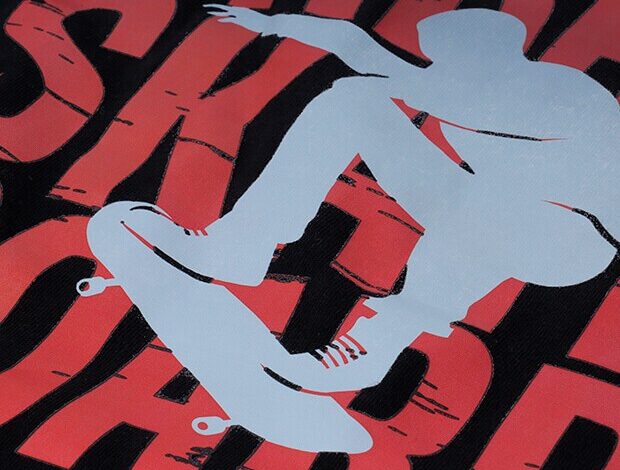A Game-Changing Technique for T-Shirt Businesses

In the fast-evolving world of garment printing, innovation often defines success. One of the most transformative technologies to emerge in recent years is Direct-to-Film (DTF) printing, a method that has rapidly become a preferred choice for T-shirt businesses across the globe. Combining precision, durability, and affordability, DTF printing is changing how apparel entrepreneurs produce customized designs and meet market demands.
Understanding DTF Printing:
DTF printing involves transferring a digital image from a PET film directly onto fabric using heat and adhesive powder. Unlike traditional DTG (Direct-to-Garment)┬Āprinting that prints directly on textiles, DTF first prints the design on a filmŌĆömaking the process faster, cleaner, and more flexible.
A modern┬ĀDTF printer┬Āuses a combination of white and CMYK inks to create vivid, full-color graphics on film. After printing, a hot-melt adhesive powder is applied and cured, allowing the design to be pressed onto virtually any fabric using a heat press. The result? Bright, detailed, and durable prints that look and feel premium.
Why DTF Printing Is Revolutionizing T-Shirt Production:
For years, T-shirt entrepreneurs relied on screen printing or DTG for custom apparel. While both have their place, DTF technology brings unmatched versatility and efficiency. Here are several reasons itŌĆÖs transforming the printing landscape:
1. Exceptional Fabric Compatibility:
DTF printing works on cotton, polyester, spandex, fleece, and even blended materials. This gives small T-shirt businesses the ability to serve a broader customer base without changing equipment or pretreating fabrics.
2. Lower Setup Costs:
Starting a T-shirt printing business no longer requires heavy investment in large machinery. With reliable DTF printers available for under 60$ per roll of film and powder, production costs remain lowŌĆöideal for startups and small workshops.
3. Vibrant, High-Resolution Prints:
Thanks to advanced pigment inks, DTF technology produces stunning detail and color depth. Unlike vinyl or sublimation, DTF prints maintain smooth gradients and fine edges, even in complex artwork.
4. Long-Lasting Durability:
A well-pressed DTF transfer can withstand dozens of washes without fading, peeling, or cracking. The flexible adhesive bonds tightly with fabric fibers, ensuring professional-grade results for everyday wear.
5. Speed and Efficiency:
DTF eliminates the need for screens, pretreatment, and color separation. ItŌĆÖs a direct digital workflowŌĆömeaning you can print multiple designs rapidly, making same-day order fulfillment a reality.
How DTF Compares to :Traditional Methods
| Feature | DTF Printing | Screen Printing | DTG Printing |
| Fabric Compatibility | Works on all fabrics | Best on cotton | Best on cotton |
| Setup Time | Very low | High | Moderate |
| Color Range | Unlimited | Limited per screen | Excellent |
| Wash Durability | Excellent | Excellent | Good |
| Startup Cost | Affordable | Expensive | Moderate |
| Ideal Order Size | Small to medium | Large | Small |
This flexibility makes DTF particularly attractive to entrepreneurs who manage short runs, custom orders, or print-on-demand operations.
The Technical Edge: Inside the DTF Process
What makes DTF so efficient is its simplicity. HereŌĆÖs a quick overview of how it works:
- Print on Film:┬ĀThe artwork is printed in mirror image on a PET film using DTF inks.
- Apply Adhesive Powder:┬ĀA special adhesive powder is spread over the wet ink.
- Cure the Film:┬ĀThe film is heated to melt the powder and prepare it for transfer.
- Heat Press:┬ĀThe design is pressed onto the garment at around 160ŌĆō170┬░C.
- Peel and Finish:┬ĀOnce cooled, the film is peeled off, leaving a clean, vivid print.
This streamlined system allows for consistent results with minimal manual intervention, making it perfect for both beginners and experienced print operators.
Industry Recognition and Global Adoption
The adoption of DTF technology has grown rapidly, thanks to companies like┬ĀDTF LINKO, which continue to innovate in print hardware and consumables. Their advanced DTF printers are engineered for high-volume production while maintaining exceptional color precision and reliability.
T-shirt printing companies worldwide are shifting toward DTF because it balances cost, quality, and flexibilityŌĆöthree critical elements in todayŌĆÖs fast-paced custom apparel market.
Sustainability and Future Potential:
As sustainability becomes a core focus for manufacturers, DTF offers significant advantages. The process generates less waste than screen printing, requires no water pretreatment, and uses eco-friendly inks. Moreover, because DTF films can be stored and reused, it reduces overproduction and supports an on-demand business modelŌĆöideal for eCommerce brands offering personalized merchandise.
Conclusion:
DTF printing has become the game-changer┬Āthat the T-shirt industry has long awaited. Its unmatched flexibility, low setup cost, and vibrant results empower both small businesses and established brands to produce professional-grade garments efficiently. For entrepreneurs looking to enter the apparel printing marketŌĆöor upgrade from traditional systemsŌĆöinvesting in a quality DTF printer┬Āis a smart and future-proof move.
As global demand for customized apparel continues to rise, DTF technology is not just a trendŌĆöitŌĆÖs the future of fabric printing.





